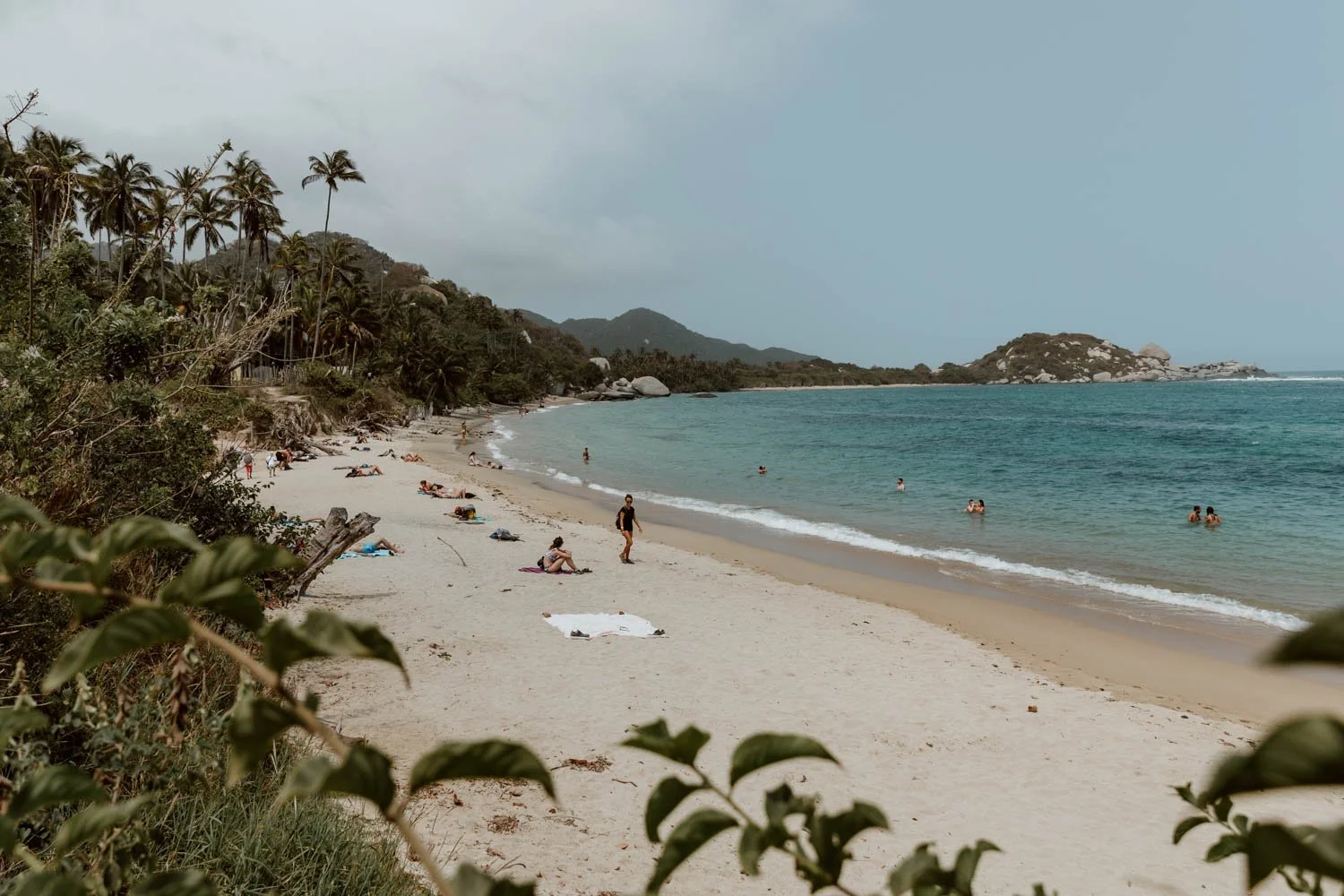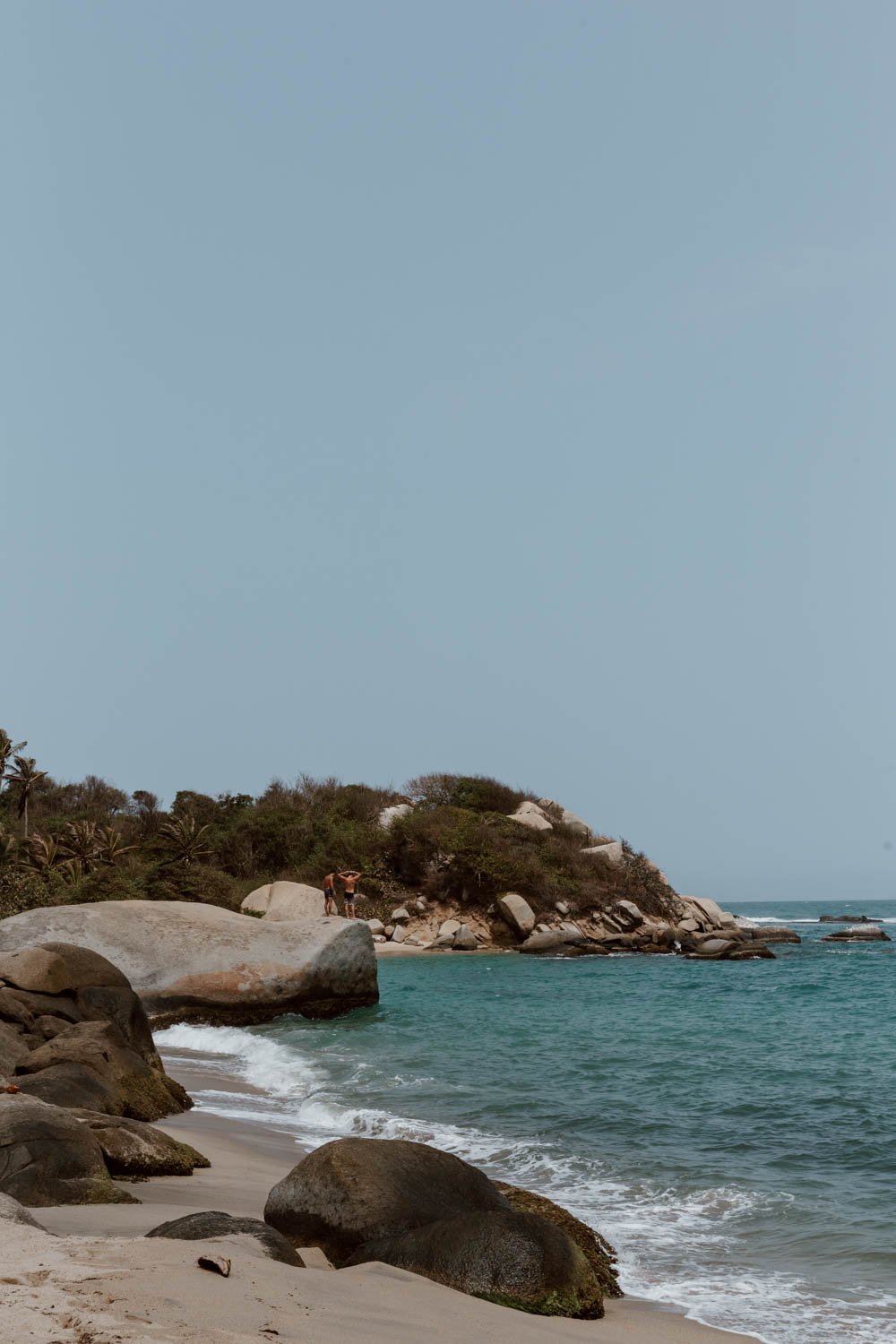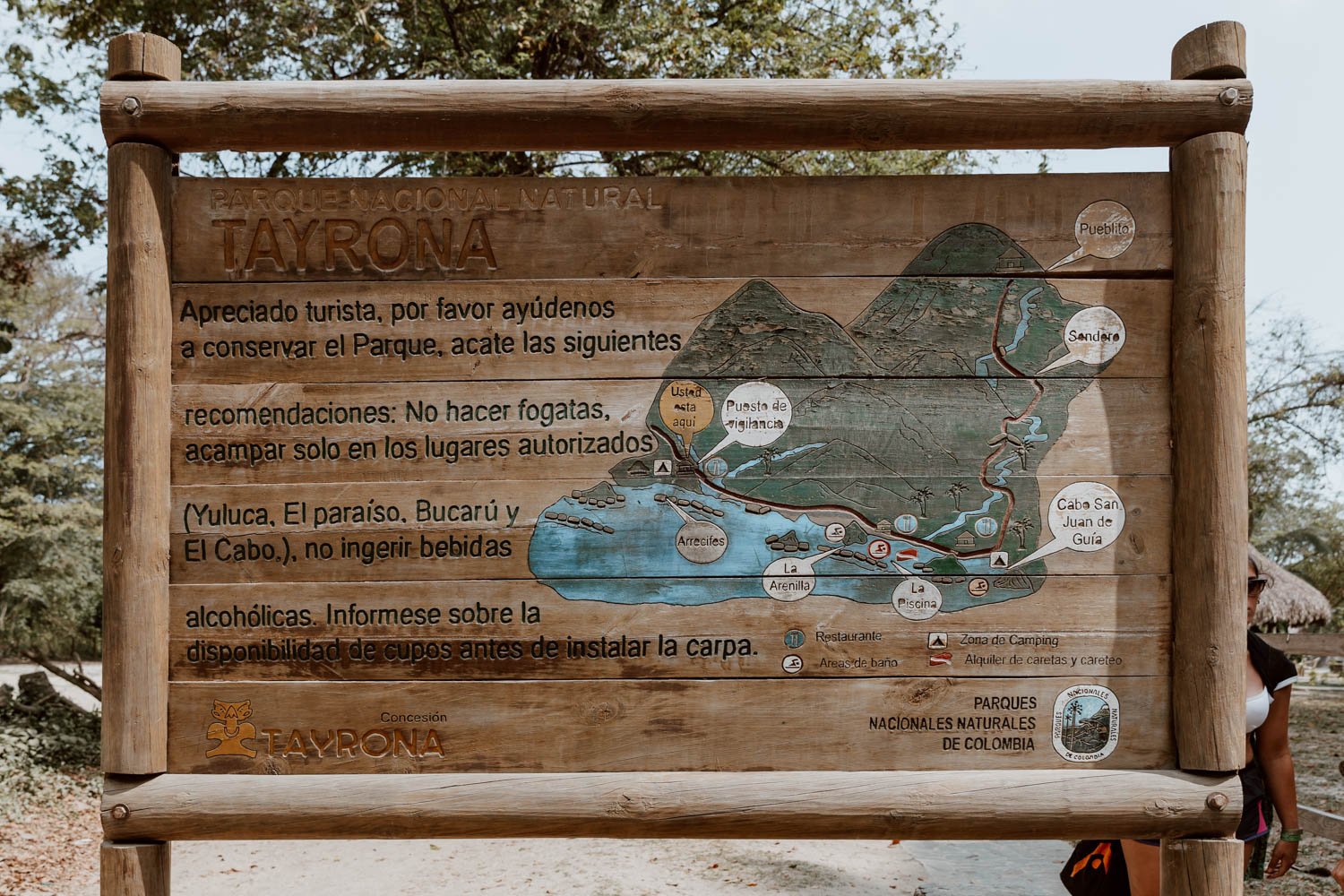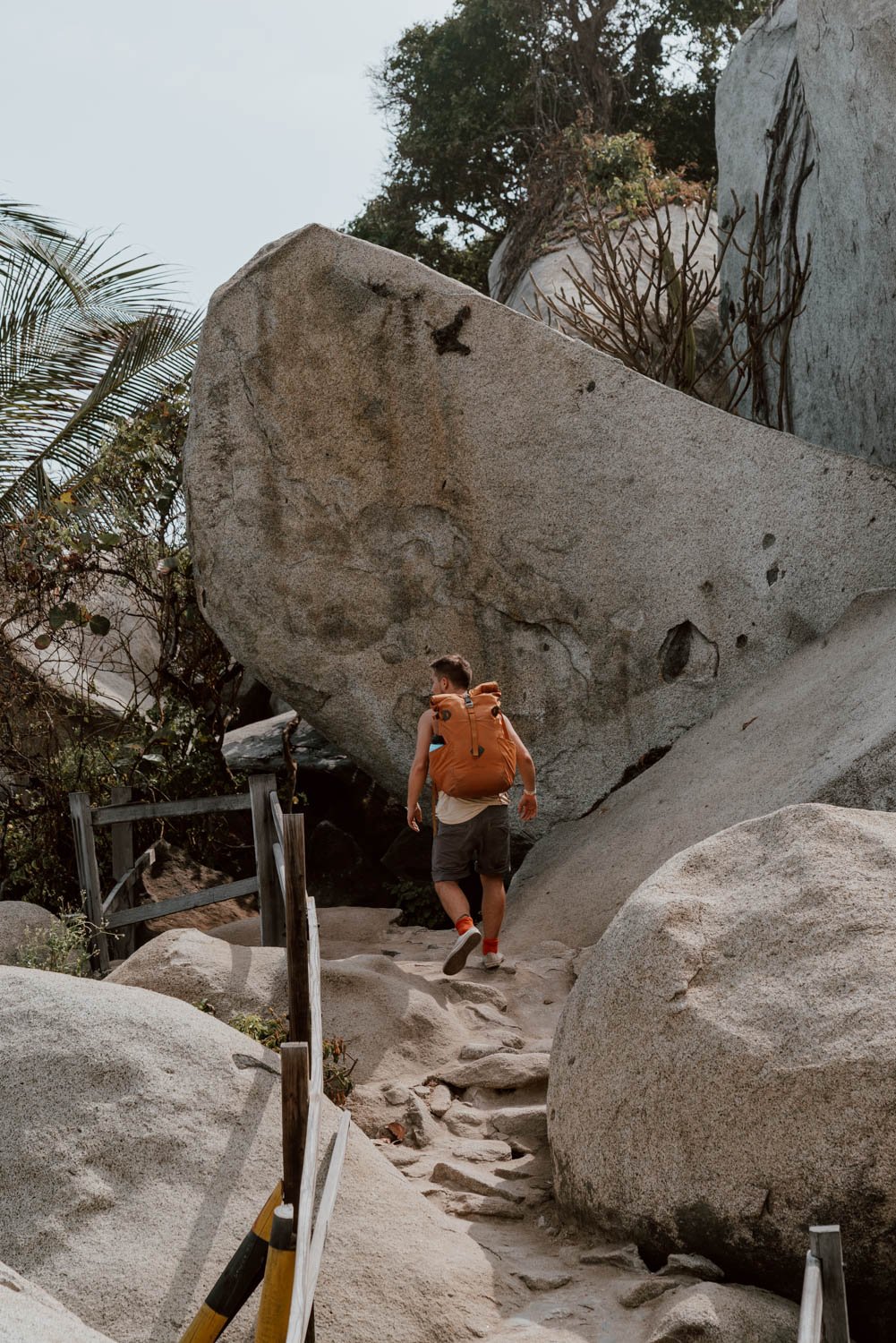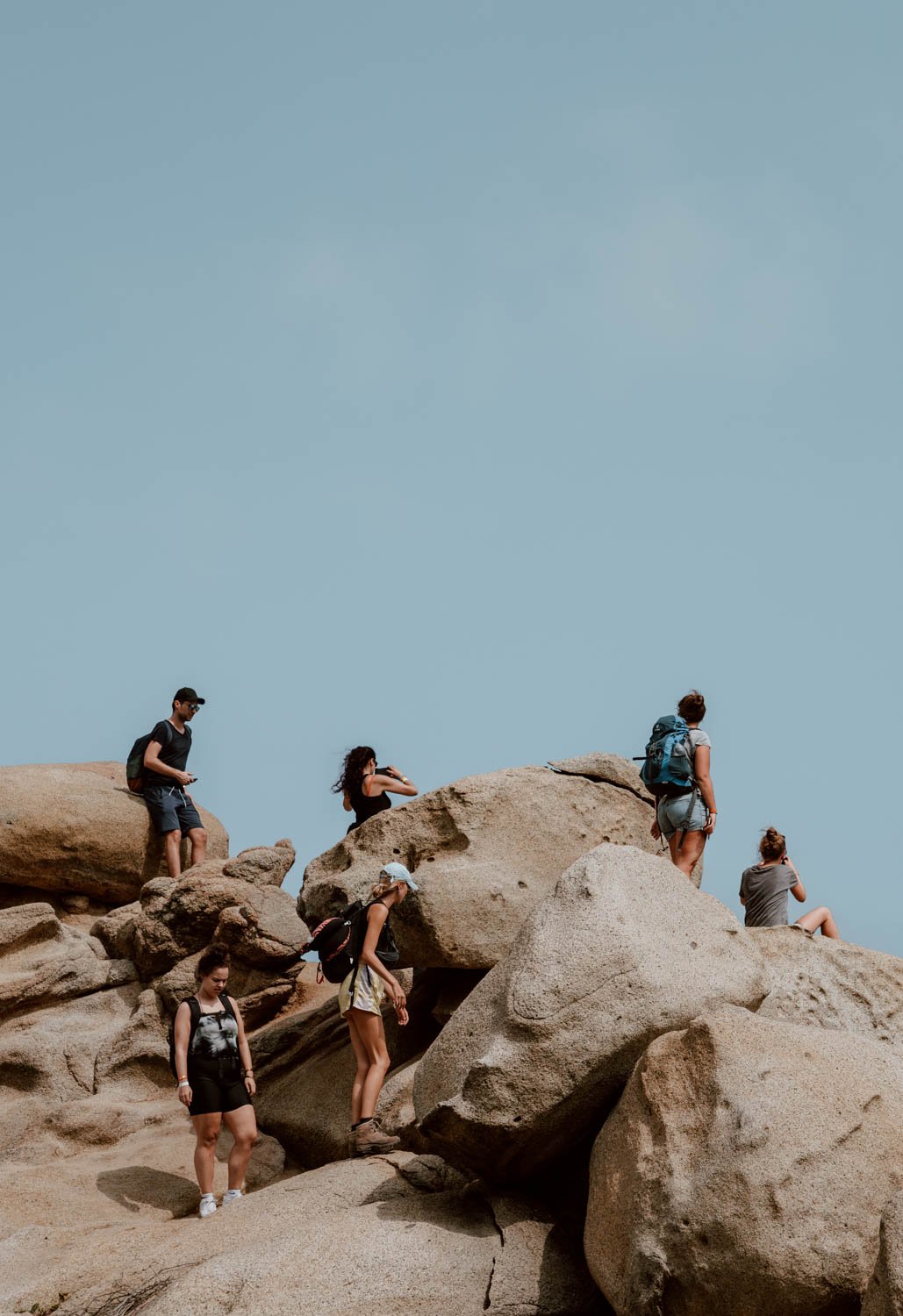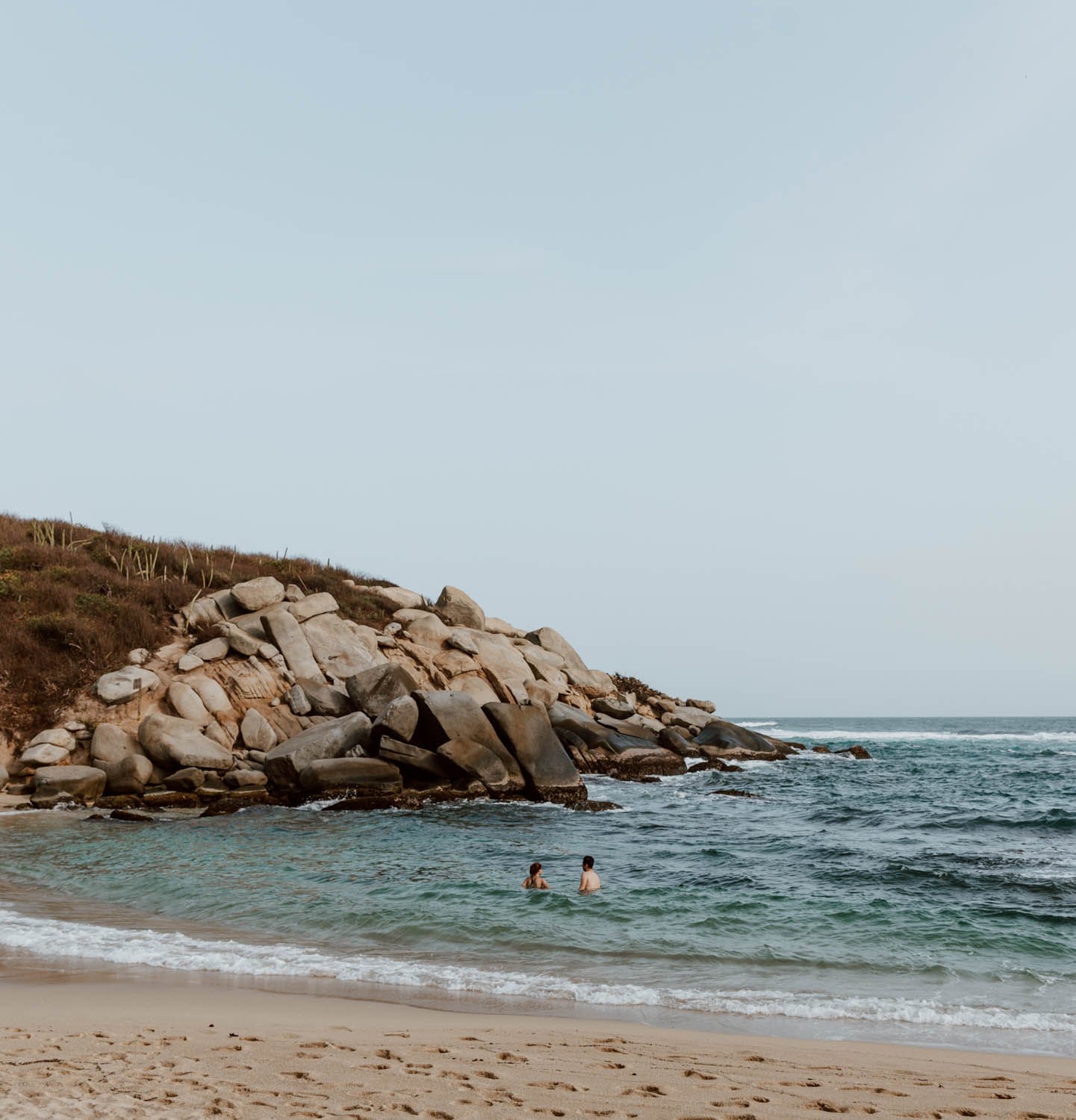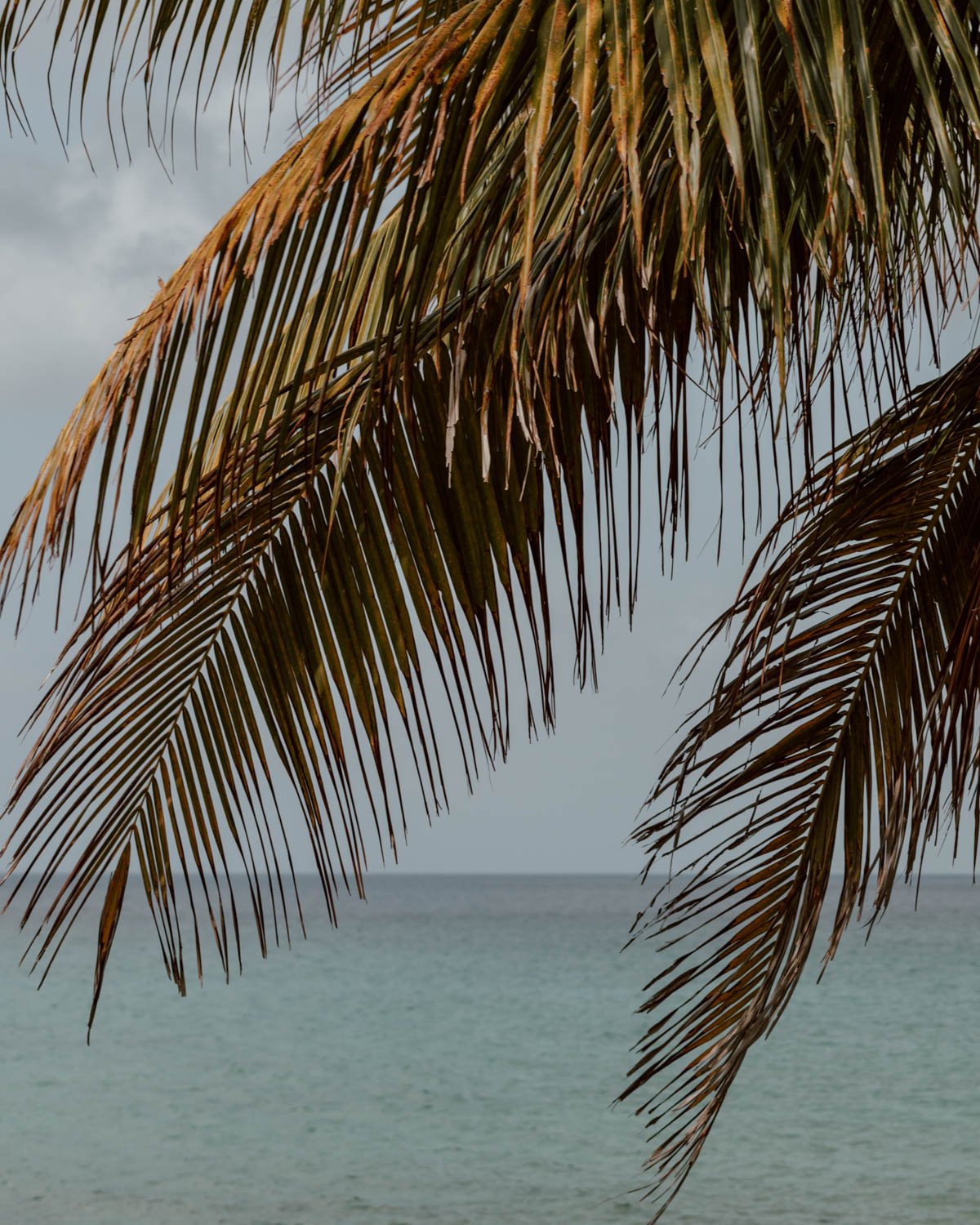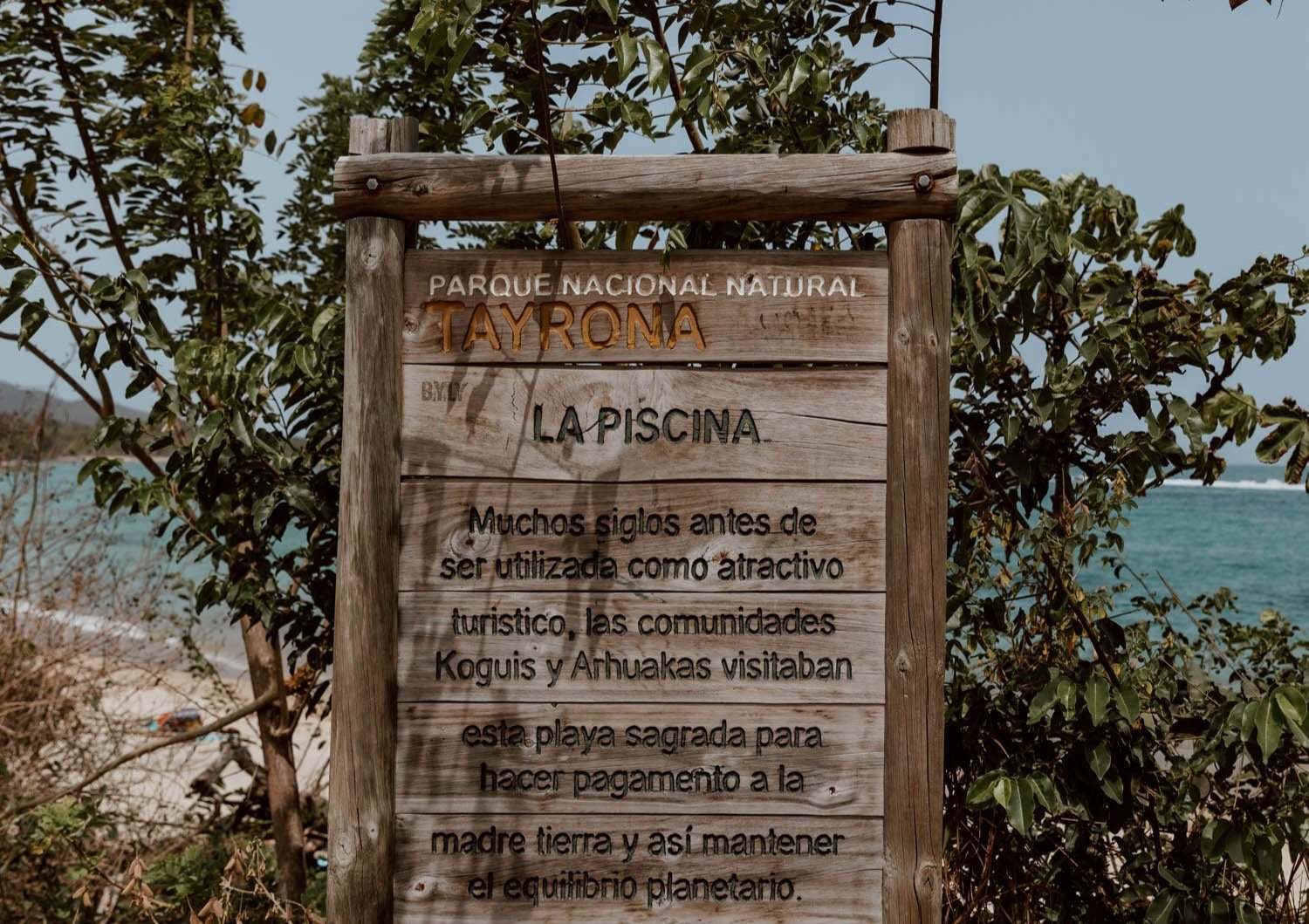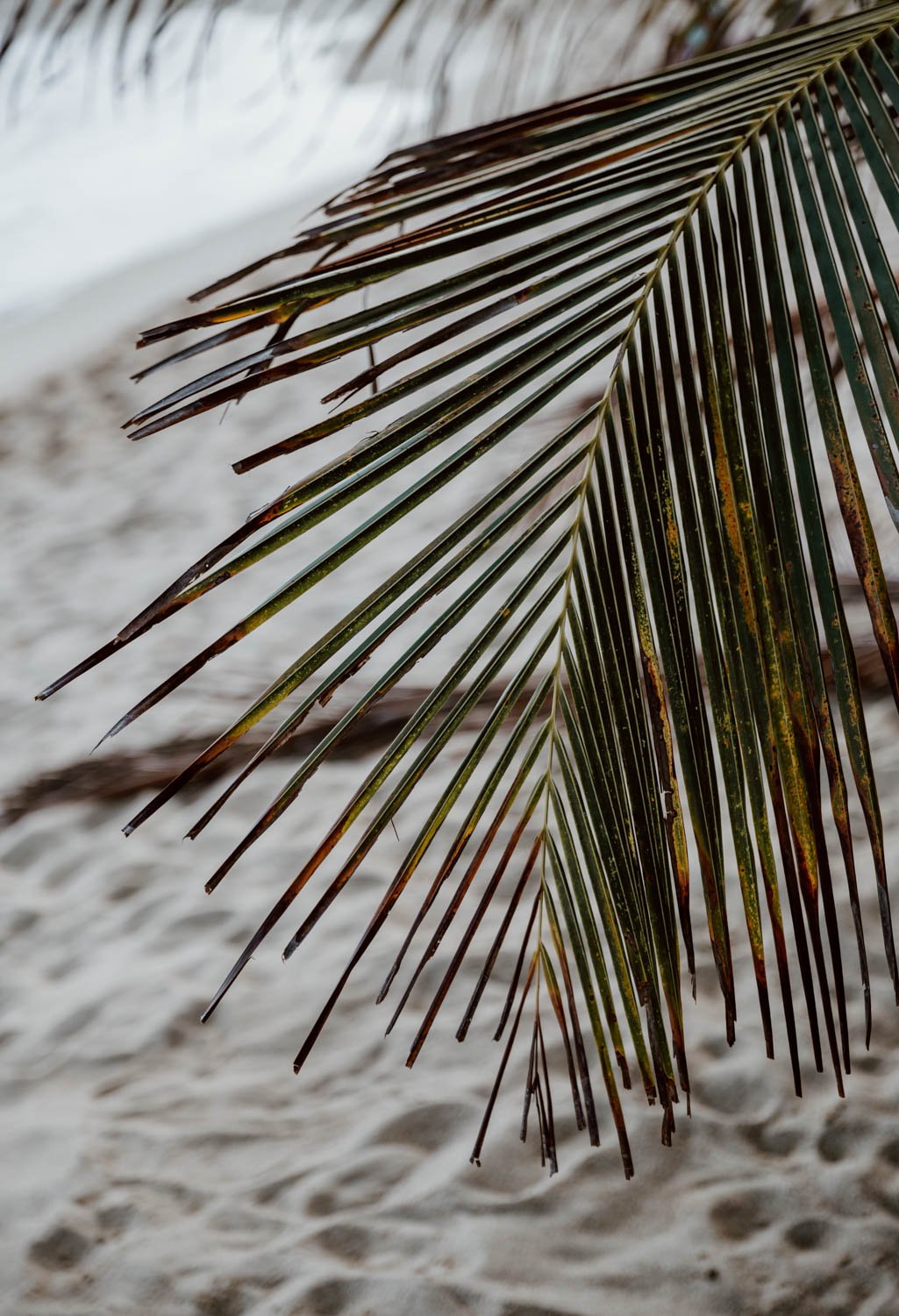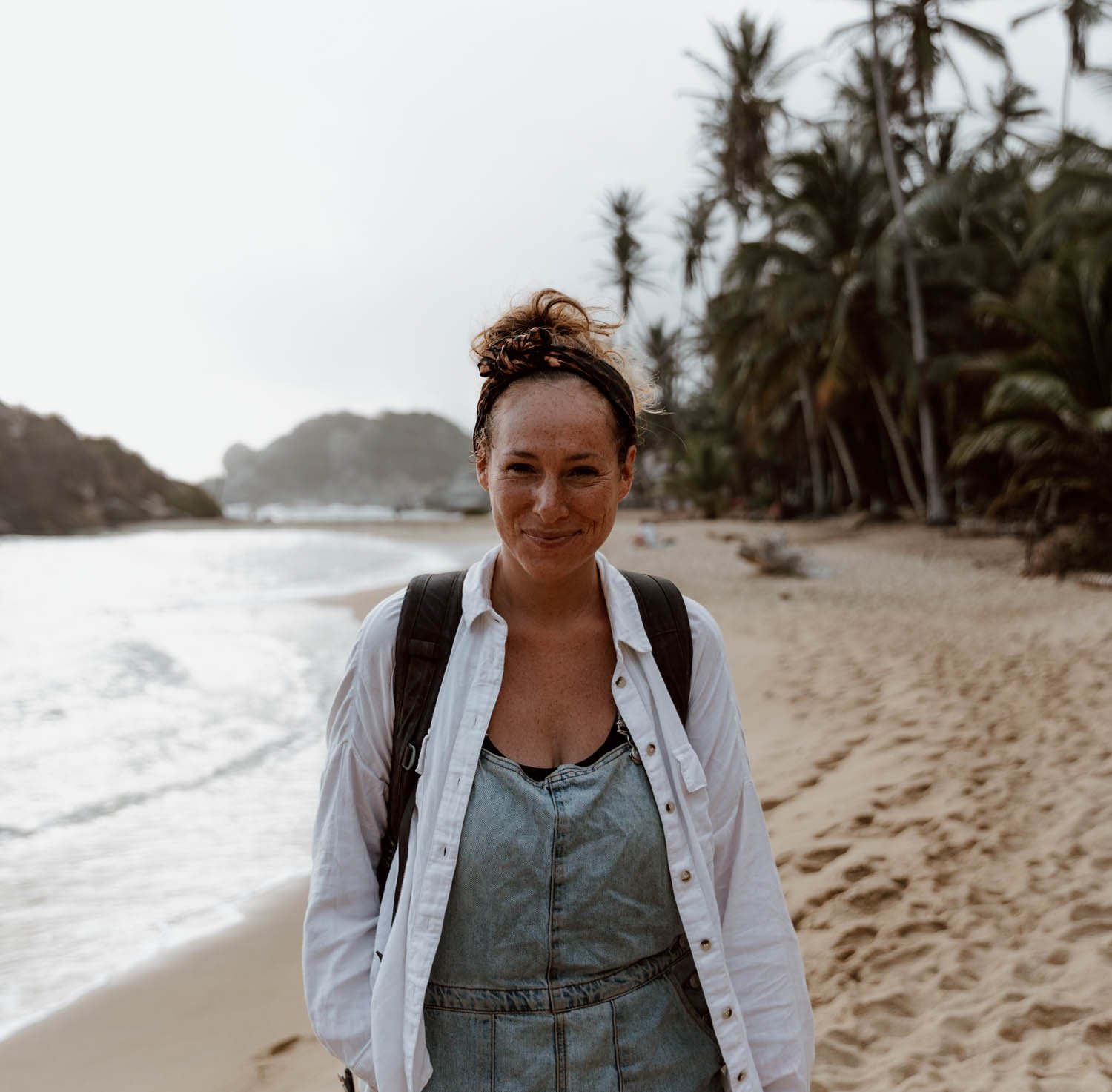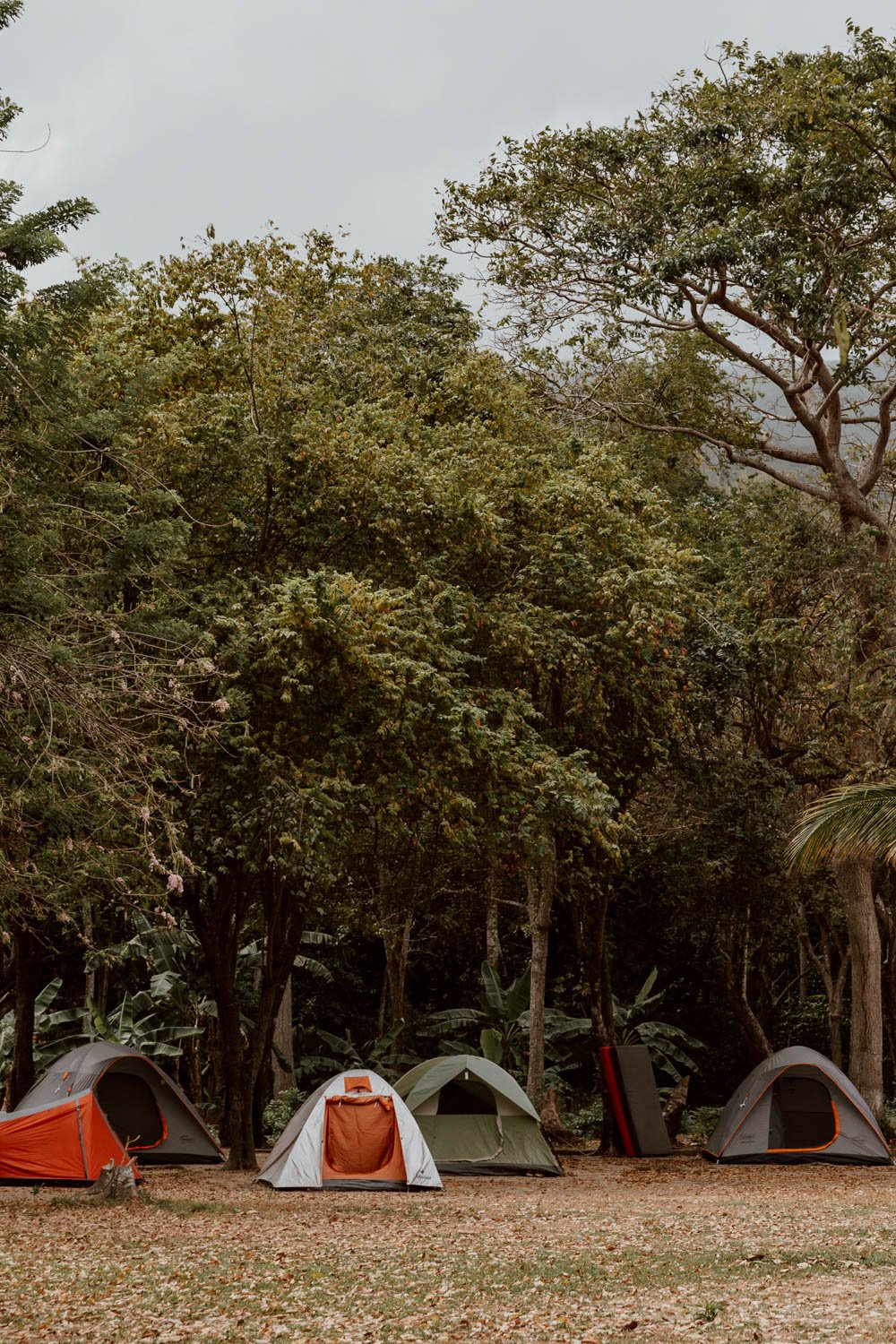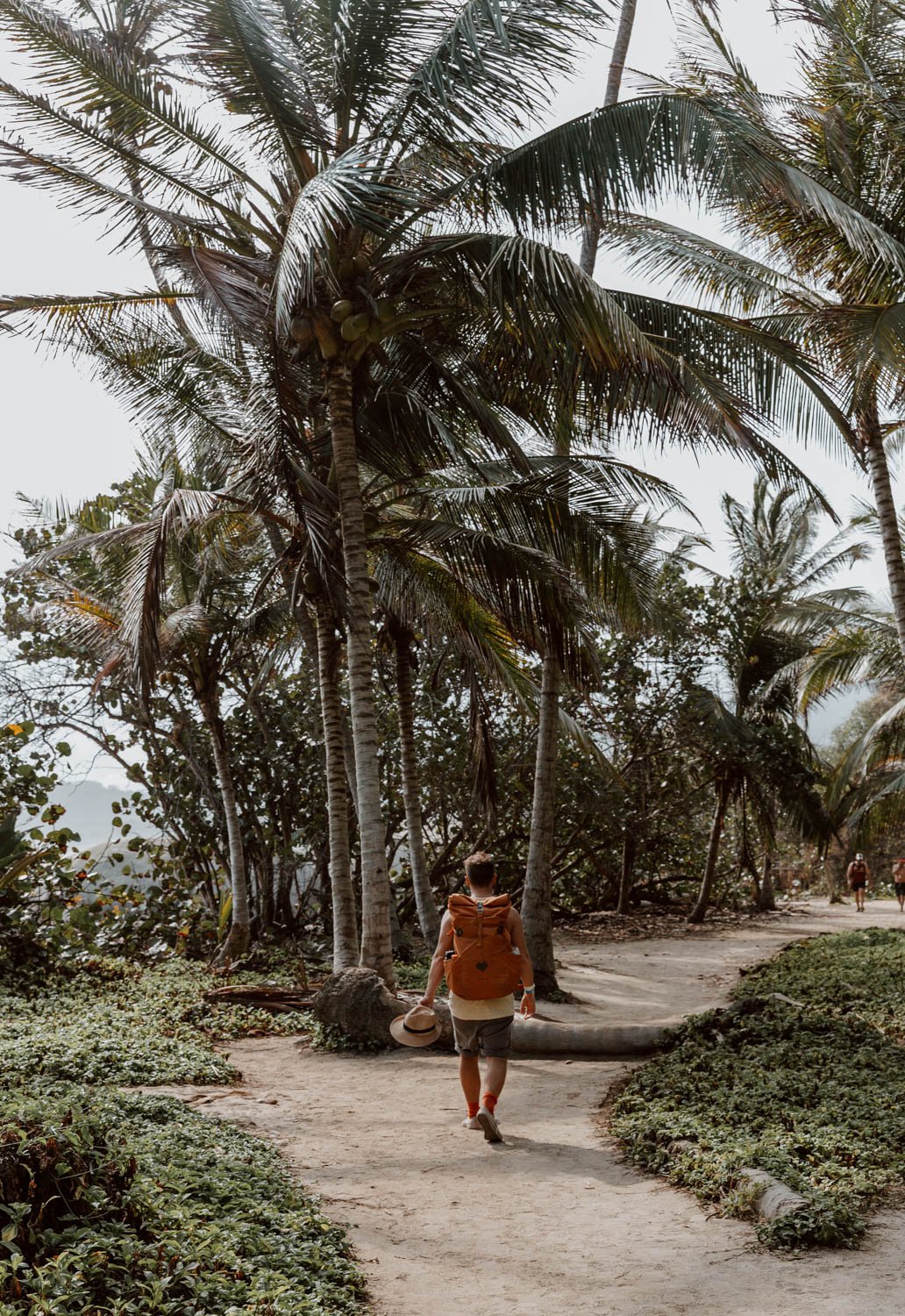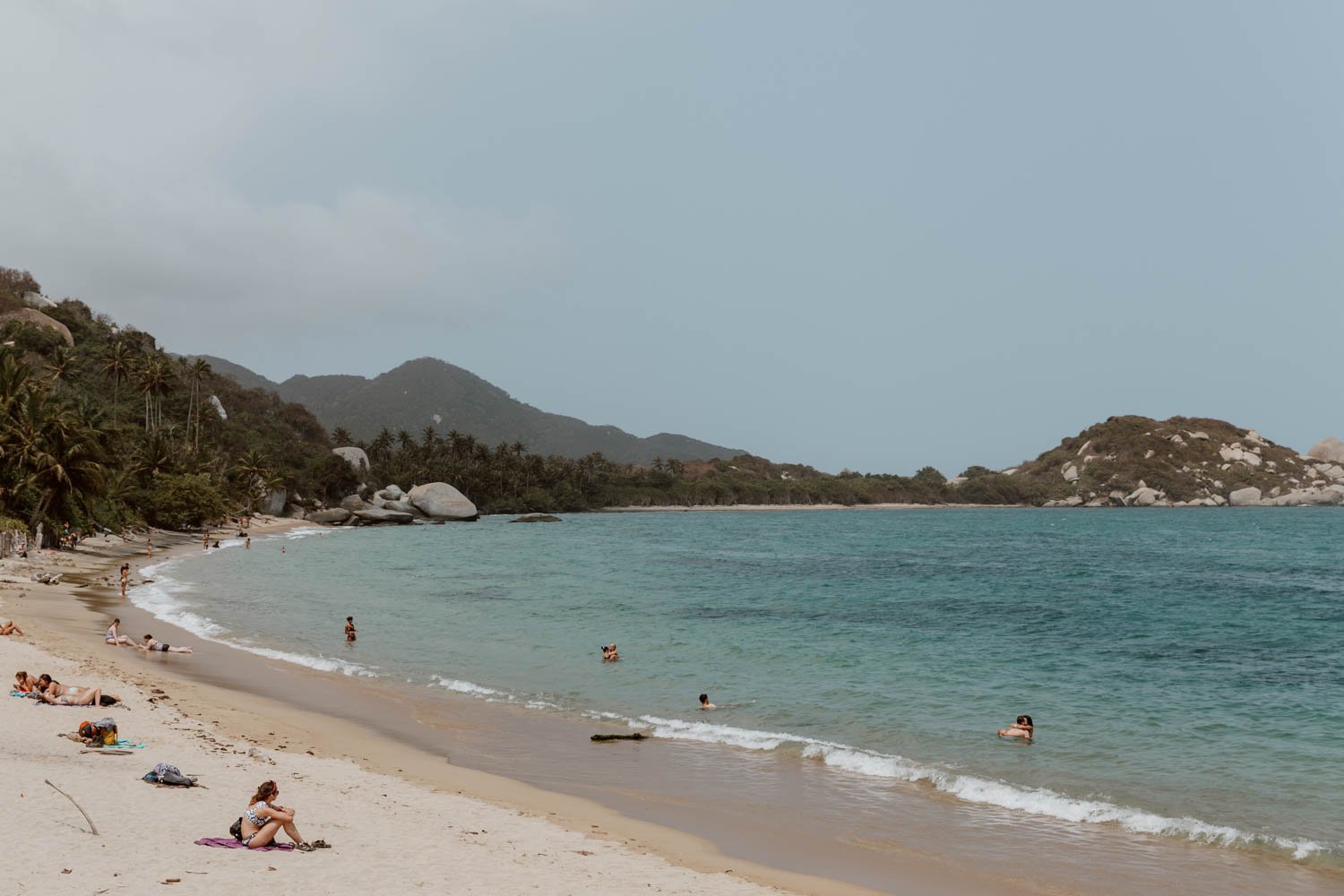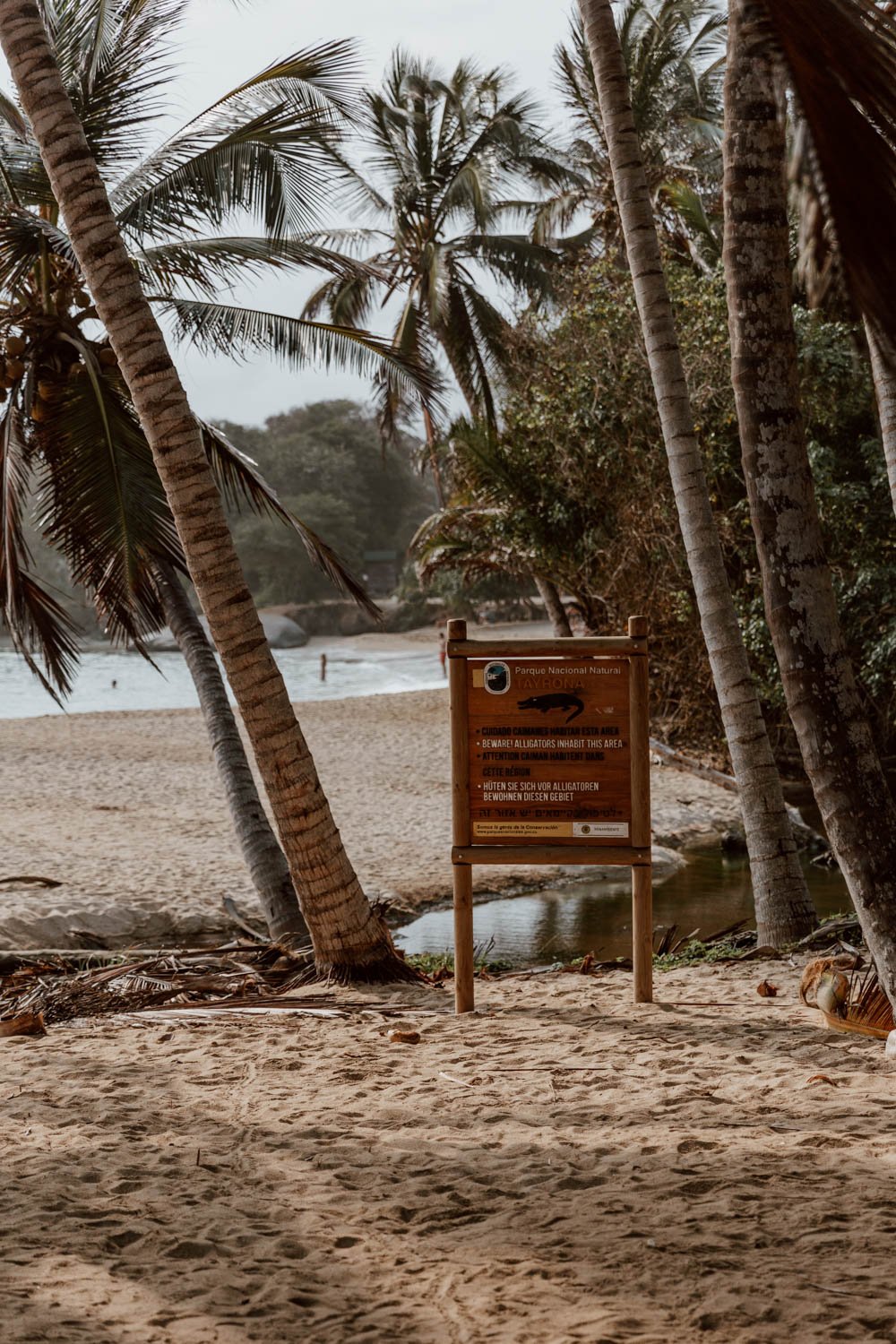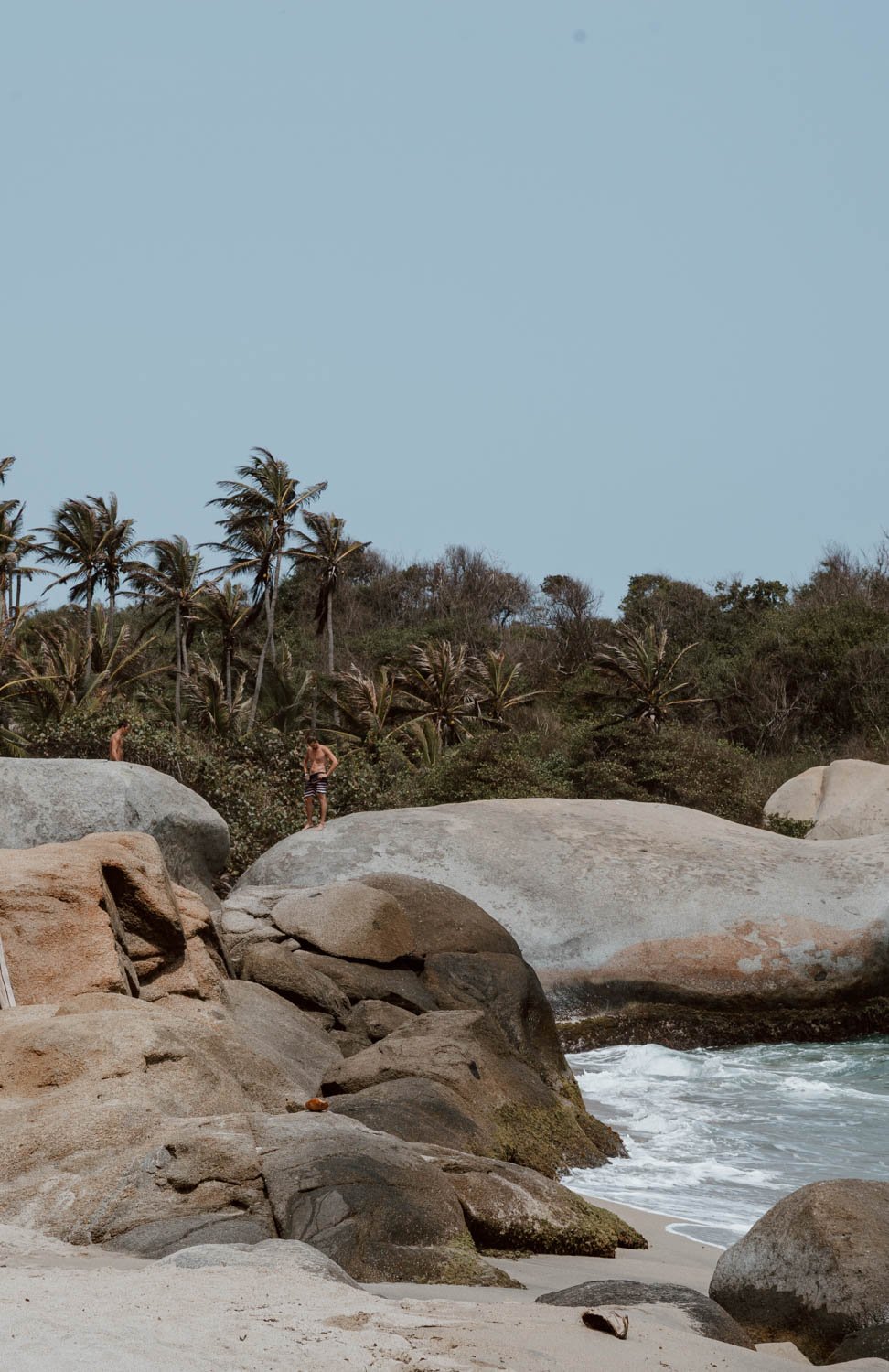Updated April 2023
With our definitive guide to Tayrona National Park, you’ll find all the essential information to plan your visit to some of the best beaches you’ll find in Colombia.
You’ve probably already seen that picture a dozen times, or at least some variation of it. After all, as tourism to Colombia increases, so does Tayrona’s undisputed position as its poster child.
Because if you’re looking for a wonderful beach in Colombia, then you’ll find it here in Tayrona National Park (or Parque Tayrona). Actually, you’ll find several of them.
Yet despite being a near-permanent feature on almost all itineraries for Colombia, visiting Tayrona isn’t exactly a walk in the park. Ok, it literally IS a walk in the park, but many people are taken aback by how busy it can be, how much it can cost or be a little confused about what a visit to Tayrona actually entails. This means that for the same ‘first-timer’ mistakes are made over and over again, and many people leave feeling a little underwhelmed by the whole experience.
So, if you’re not sure if you’ll manage the jungle hike to the beaches, don’t know what to bring, have no idea where to stay in the park or how many days the whole things going to take you, then this personal guide to Tayrona National Park, created after our own visit, will give you all the answers!
Tayrona essentials
/ A protected national park in northern Colombia
/ Hiking trails, lush vegetation and gorgeous beaches
/ One of most popular things to do in the country
/ Tickets cost 57,500 to 68,000 COP per person
/ Easily accessible from Santa Marta, Palomino & Costeno
/ Possible to visit as a day trip but ideal for overnight stay
Why Visit Tayrona National Park?
Because the beaches, quite frankly, are stunning.
Some of which you can actually swim in, which, if you’re reading this having already spent time along the Colombia Caribbean coast, you’ll realise is not always a given.
Throw in the fact that it’s all set within a lush, tropical national park with palm tree forests and secret trails, and it’s clear why Tayrona is viewed as something quite special. If you aren’t doing any other hiking whilst in Colombia or South America (like the Lost City Trek), then you will also enjoy the manageable but sweaty mandatory walks along the trails within the park and by the coastline, which are the only way - except by boat - to reach these beaches.
When’s The Best Time to Visit Tayrona?
Crowds | Given Tayrona’s draw amongst domestic and foreign tourists, particular beaches and points along the trails will always be busy (especially on the weekends). With this said however there are certain times of year when visitor numbers will ramp up quite considerably, specifically in the months of December to mid-January and again in June and July when a few nights in Tayrona becomes a super popular holiday choice for Colombians. The same can be said for Semana Santa (the Easter holidays).
During these high season months Tayrona will be at its fullest, possibly at capacity so if you have any flexibility in your itinerary, we’d recommend avoiding this time of the year.
Weather | The weather and seasonality varies considerably throughout Colombia, but along the Caribbean coast the rainy season tends to be April & May, then again in September to November. Rain showers during these months are frequent but the crowds in the park at there lowest, so it may be a worthy trade off for those that wish to enjoy Tayrona with fewer people.
Closures | One super important thing to be aware of before panning your trip to Tayrona is that there are three distinct sets of dates when the national park closes to visitors (previously this was just during the month of February).
The reason for this is two fold. Firstly, this allows the various ecosystems, flora, and fauna within the park to rest and replenish, particularly after those high season December and January crowds have taken their toll, and secondly it provides time for the four indigenous groups - who have always called the park and the wider Sierra Nevada de Santa Marta home - to perform traditional cleaning rituals and ceremonies throughout the park. We think this is an excellent and necessary initiative and hope it continues to be safeguarded in the face of rising tourism demand in Colombia.
For the traveller, it does however mean that you will not be able to step foot in Tayrona National Park on the following dates (updated for 2023):
February 1st - February 15th (park open from 16th onwards)
June 1st - 15th
October 19th - November 2nd
We met a lot of people on the road who didn’t know about this when planning their Colombia itinerary, and were hugely disappointed that they had to miss out on Tayrona - so plan ahead chicos! And let us know in the comments if these dates change.
Tayrona Park Opening Times | Outside the above listed closure dates, the gates open for entry to Tayrona National Park at 7am, and stay open until 12 pm (previously you could enter until 5 pm, but increased popularity has meant that visitor numbers are simply too high by early afternoon to let any more people in).
For this reason it is highly recommended that you arrive at the gates as early as possible, ideally before 7am, and be prepared that you still may need to queue.
The above change also extend to departure times; you now must leave the park between the hours of 2pm and 5pm.
How Do You Get To Tayrona National Park?
As mentioned above, the key to doing Tayrona well is to arrive early at the park entrance so that you don’t have to queue for too long, are guaranteed entry, beat the tour groups, and also ensure you have a bed for the night (more on that later). This has become increasingly important since the entry window has been significantly reduced.
Another reason for Tayrona’s massive growth in popularity is due to its proximity and ease of accessibility from the city of Santa Marta, only an hour away. However we think your best best to visit and really enjoy Tayrona at its best is to travel in the morning directly from Costeño or one of the various accommodations nearby the park.
We’ve outlined the various public transport options for how to get to Tayrona below so you can understand the times and costs associated with each. Note that going from Cartagena to Tayrona with public transport is not a sensible or desirable option, and is only realistic with a private taxi, or on a guided day tour (like this highly rated option).
Santa Marta to Tayrona
Bus From Central Santa Marta | If staying in the centre of Santa Marta, then head to the busy Central Market (Mercado Público de Santa Marta on Google Maps) and you’ll find the bus departing from the corner of Calle 11 & Carrera 9 (maps). They have departures every 30 minutes starting at approx. 6 am, but if you can’t see it waiting then check with a local that you’re in the right spot.
The bus is likely to be full of gringos, but be sure to confirm with the driver that you want to be dropped off at the Tayrona entrance (sometimes referred to as El Zaino).
Tickets have been known to vary in price, but expect to pay around 10,000 COP for the one hour bus journey.
Bus From Santa Marta Bus Terminal | An alternative option if you’re staying in one of the several popular hostels outside the city centre is to take a taxi to the Santa Marta bus terminal (also on the city outskirts), hop on a bus to Riohacha or Maica and make sure it drops you off at the entrance.
Hostel Shuttles | These have become an increasingly popular way for backpackers to reach the park, but obviously the convenience will cost you more. The Dreamer Hostel offers this service to their guests.
Taxi | The price of a taxi from Santa Marta to the entry gate of Tayrona National Park is prohibitively expensive for most travellers, but may be something to consider if there are a group of you making the same journey. The price depends very much on your ability to negotiate with Colombian taxi drivers, but expect to pay somewhere in the region of 80,000 to 100,000 COP ($17 - $21 USD).
Tour | If you’re short on time and are only able to visit Tayrona on a day trip from Santa Marta, the good news is that there are a couple of really excellent, highly rated tours available, including this private tour which includes transport, entrance to the park, a local guide, a hike to Cabo San Juan and time at the beach.
Alternatively, we love the sound of this full-day, super popular sailing trip to Tayrona which includes lunch, waterspouts and lots of time to chill out.
Top Tip // If you’re only going to Tayrona for a night or two and then heading straight back to Santa Marta (or indeed wanting to check out Palomino as well), it’s a good idea to just store your big backpacks at your hostel and travel light - most will do this for free. The Dreamer Hostel and Masaya Hostel are two popular hostels in Santa Marta.
If you need more tips and suggestions for the city, then check out our guide on the best things to do in Santa Marta.
Boat from Taganga to tayrona
We have spent months and months in Colombia, but its truly terrible reputation means we’ve never made it to Taganga (it’s supposed to be a decent spot for diving though). However, as it’s only 15-minutes from Santa Marta many people still visit and then take the daily boat service which runs you to Tayrona.
The speedboats leave from the beach at around 10 am and drop you off at Cabo San Juan beach, rather than the entrance - this is why it remains such a popular, albeit expensive, option.
Boats return from 4 - 4.30 pm, and you’ll hear guys at the beach shouting out for passengers. Note that if you really want to take the boat, but don’t want to stay in Taganga, then it’s a really quick bus or taxi ride (less than 15 minutes) to the village from Santa Marta.
Tickets for the boat cost approximately 150,000 COP for round-trip, but you can negotiate with for a one-way fare. Journey time is around 45 minutes.
An important thing to note is that between the months of October and March the sea is particularly choppy, so be sure to bring some plastic bags to keep your stuff dry (this is especially true for those at the back of the boat!).
Top Tip // Hostal Palohe and Divanga Hostel are widely viewed as the best places to stay in Taganaga.
Moto-Taxi from Costeño
We did a lot of research into how to best fit in Tayrona to our two-month Colombia itinerary, and were delighted when we hit upon this option.
Costeño is basically a secluded beach with various backpacker hostels and a few resorts - and that’s about it. It’s great for some relaxation in somewhere less crowded than Palomino, whilst still having a chilled out social atmosphere. Its proximity to Tayrona also means it’s the perfect place to set off from and return to, especially if you’re going to be spending more time travelling along the Colombian coast rather than return to Santa Marta.
We stayed the night at La Brisa Tranquila (we actually had our hearts set on Tayrona Tented Lodges, but it was sold out), left our bags and valuables there in lockers, then took a private moto-taxi in the morning from the hostel door to the Tayrona entrance. This meant we arrived at the entrance well before 8 a.m. with zero stress, and could take it easy getting some supplies and breakfast before going in.
Another popular option to stay at for a couple of nights before or after Tayrona is El Rio Hostel, which has won various awards, but is a little further down the road.
As is often the case with any type of private transport, prices can vary, but expect to pay between 12,000 and 15,000 COP per person for this 15 minute journey.
Read more in our short guide to Costeño.
Bus from Palomino
The final option is to have a few days or a week hanging out in the backpacker beach town of Palomino, and then take the morning bus from there to the entrance. However, depending on your direction of travel, many of you may end up going to Palomino after your time in Tayrona.
Find out information on the bus from Palomino and what to do there in our Palomino guide.
This journey costs around 8,000 COP per person, and takes around 45 minutes
What About On The Way Back?
Once you’ve left the park after your stay of one to three nights, you will have offers of private taxis and shuttles and moto-taxis, or you can simply wait for one of the regular buses back to Santa Marta or onward to Costeño or Palomino.
Or you could decide that you don’t fancy the two-hour walk back to the main entrance, just hop on the boat to Taganga around 4 pm and take a taxi or bus back to Santa Marta.
Do You Need a Tayrona National Park Ticket?
Yes.
However, the cost of entry to Tayrona is more than most budget backpackers think. In fact, on our first trip to Colombia (way back in 2016 when we were on a really tight budget) we decided not to visit Tayrona and instead put the cash towards an adventure to La Guajira.
Ticket prices tend to increase year-on-year, and given the the parks popularity this will likely continue to happen. Currently, the price you pay depends upon whether you’re visiting Tayrona in high season or low season:
· High season tickets (December to February, and during public holidays) cost 68,000 COP
· Low season tickets cost 57,500 COP
How and where you buy your ticket however, is something that changes frequently.
For many years you were only able to purchase your entry ticket at the gate, on the day you wished to enter. More recently, you’ve also been able to buy tickets in advance and online (which meant you could queue in a separate and faster line upon arrival). Unfortunately this appears to no longer be the case, and you’re back to only being able to purchase them at the gates.
We will try and keep this post as up to date as possible, but if you happen to discover that the online system is working again, we’d love to hear from you!
Most people purchase their ticket at the park’s large and modern Zaino entrance, which has various ticket booths. Doors open at 7 am, and as stressed earlier, it’s best to arrive around that time (or even a little earlier) to avoid the worst of the queues.
In order to purchase your ticket you will also need to show your passport, and possibly proof that you have been vaccinated against yellow fever. We weren’t personally asked for our proof (and it seems few people are), but if you’re concerned and not vaccinated we have heard you can actually get it for free in Bogota airport - remember the vaccination is not simply to protect yourself but to also protect local populations who may be more vulnerable to certain diseases (you can be a carrier of yellow fever and pass it on without actually being affected by it).
An important thing to be aware of is that you will also need to pay an extra charge for ‘insurance and rescue’ at the ticket booth - this is irrespective of whether you have your own personal medical insurance (which we did). This is charged at a rate of 5,000 COP per person, per day, and can only be paid in cash.
You will receive a number of wristbands as proof of purchase, including one for your entry and one for the mandatory insurance.
Note that the Tayrona tickets provide access to all public areas of the park and doesn’t have a time time, it is not however a multi-entry ticket and does not include any accommodation or transport within the park.
Tickets for Colombians are much cheaper at 25,000 COP. Children under 4 years old enter for free.
What are the Best Beaches in Tayrona?
Not such a straight forward question.
Tayrona National Park encompasses a much wider area than the beaches and section that we and most other travellers visit during our time in Tayrona. The park is so vast at 150 square kilometres (58 sq mi) that many of its most beautiful beaches are simply not found or accessible from the main Zaino entrance; if they were, they’d probably be slightly less beautiful. Beaches likes Playa Cristal (which allows only 300 visitors per day), Neguanje, Playa Brava, and Playa 7 Olas look wonderful from the photos we’ve seen, but there’s a reason hardly anyone visits them.
But that certainly doesn’t mean you should be despondent, as several of the 6-7 beaches you’ll visit during your hike through the wild jungle are simply stunning. But take note, it is unsafe - and we mean seriously unsafe - to swim at several of the best beaches in Tayrona due to strong currents. As you will see when you visit there are numerous signs up saying that hundreds have died ignoring this warning, so please take heed.
These are the beaches most travellers will have the chance to visit when you’re in Tayrona:
Castilletes + Cañaveral | The two beaches border each other, but are quite close to the entrance of Tayrona and not on the main trail, so very few backpackers stop here. Instead, the long sandy stretches are actually more popular with holidaying Colombians. If you stay at Ecohabs or do the 9 Stones walk, then you will be close enough to visit however. Unsafe to swim (however there is a small section call La Piscinita where it’s possible). You can find Castilletes here and Cañaveral here.
Arrecifes | We didn’t really love this long and wild stretch of beach, one of the largest in Tayrona, but it’s still very pretty. This is a very short walk away from a big, good quality campsite - the first one you’ll stop at on your hike through the jungle. It is unsafe to swim here. Find Arrecifes beach here.
La Piscina | A little gem. It’s safe to swim and it’s a wonderful, calm space with far fewer crowds on the crescent shaped beach than at Cabo San Juan - the photo under the Why Visit Tayrona National Park? section above is of this beach. Not to be confused with ‘La Piscinita’! Find La Piscina here.
Cabo San Juan | The most famous and the most popular beaches of Tayrona are here. As well as that famous double-mirror viewpoint, it’s got palm trees, it’s got soft pale sand, it’s got that Caribbean blue, and it’s got waters which are safe to swim in. This is the beach which most backpackers will sleep next to during their time in Tayrona, possibly even swinging in the sea breeze at the in-demand hammock hut atop the rocks. Find Cabo San Juan here.
Punta Piedra + Playa Nudista | A 10-15 minute walk from Cabo San Juan, these are relatively quiet as most people simply stop at the more famous beach. They are however absolutely lovely and worth walking to, especially to escape the crowds. Note that you can get nude here but many people don’t. Its waters are not recommended for swimming. Find Punta Piedra here and Playa Nudista here.
Top Tip // We’ve shared more information on which beaches are best to visit, and in what order, in our Two Days in Tayrona itinerary.
How Do You Get To The Beaches?
Walking and more walking!
After you purchase your ticket, you can either walk for 4kms from the entrance or take a small but regular shuttle bus to the main trail start point - don’t be a hero and just take the shuttle. The walk from the ticket office entrance is universally acknowledged as not very interesting and a bit of a waste of time and energy, so your best bet is to simply join the queue on the right hand side for the shuttle.
At 5,000 COP for the 10 minute ride, we thought they were great value but note it can be a tight squeeze once everyone’s inside.
After the shuttle drops you off, it’s a hot and sweaty walk for around an hour to two hours (or even three) depending upon which beaches you want to hang out at or visit - we’ve given more detailed instructions on this walk and the distances involved in our Two Day Tayrona itinerary.
The walk itself is really not difficult, with the trail being signposted, well-trodden, and a mixture of dirt, rocks, and wooden platforms.
Top Tip // The is an alternative Tayrona entrance and exit point at Calabazo, but we don’t have any experience of walking it or travelling to it (let us know in the comments if you do). It’s accessible with the same bus from Santa Marta, and 10-15 minutes before Zaino. Note that, for exiting Tayrona, you will likely walk back along the same trail to the Zaino entrance for 2-2.5 hours and you have to time this to ensure you can catch the last shuttle bus - unfortunately we don’t know what time the service ends, but given that you need to exit by the park by 5 pm, we’d recommend getting to the shuttle stop by 4 pm in case there’s a lengthy queue.
How Many Nights Do You Need in Tayrona?
We think this is actually the most divisive, but most important issue, when it comes to how much you’ll actually enjoy Tayrona.
For us, a day trip to Tayrona really isn’t worth it. The entry cost means takes cash out of your travel budget for only 5-6 hours in the park, the experience will be rushed, and it hugely adds to the overcrowding situation. Instead, if you really want to visit Tayrona but are short on time, then you would be much better choosing a visit of two days / one night (but that does come with its own issues…). This gives you nearly two full mornings and afternoons in Tayrona, and you can then easily travel back to Santa Marta or onward to Palomino etc once you’ve exited.
On our own visit to the park in mid-March, the crowds really did take us by surprise. We knew it would be busy, but we didn’t expect it to be that busy - transforming Cabo San Juan into somewhere we didn’t really want to be at times. Most of that first day, aside from the walk in through the tropical trees, was really not too enjoyable.
However, once the daytrippers dispersed back to Santa Marta or Taganga at 3.30 / 4 p.m., we started to fully appreciate how beautiful the beaches actually were here and the vibe became much better. At night, it becomes really social and chilled out - and, we imagine, much closer to the Tayrona of old!
And then, in the early morning as we walked from deserted beach to deserted beach with the crashing waves as our soundtrack, we felt a little of the magic which we thought had perhaps been lost from Tayrona forever.
But, as the accommodation is so basic (see the next section) and the afternoon crowds such an issue, we would have begrudged staying another night or longer. In fact, it would have made us quite miserable.
If this is your first time on Along Dusty Roads, then we should note at this point that we have travelled Latin America for nearly 3 years in total (a significant chunk of which was on a really tight budget), and so this isn’t a case of two pampered travellers having a moan about minging toilets.
Maybe it’s because we had recently enjoyed blissed out beach days on the Colombian islands of San Andres + Providencia, and so we didn’t appreciate the beautiful beaches of Tayrona as much as we could have?
Lots of young groups of mate-sipping Argentines and Uruguyans and those enjoy a hackneyed form of peaced-out hippydom (whilst they leave their cigarette butts scattered in the sand) would disagree with us about Tayrona. And, if you visit in low season and perhaps base yourself somewhere less popular than Cabo San Juan, you may have a much better impression. However, we feel it’s really important to share our honest opinion and set your expectations for Tayrona as it’s such a hyped destination amongst travel websites trying to sell tours or a certain vision of Colombia (which is our favourite country in South America).
And so, we couldn’t have stayed in Tayrona for more than two days. If you’re a group of young travellers and willing to tolerate the hammocks at night and the crowds in the afternoon however, then you may absolutely love being here for a little bit longer. However, the main points to help reduce the number of people you’re sharing it with are:
Avoid December and January
Avoid weekends and public holidays
Make the most of the late afternoons and mornings without day-trippers and new arrivals
Further Reading | Our route and suggested stops in Tayrona.
Where Do You Stay?
Staying inside the park is by far the most popular option, but the first thing to know is that the accommodation in Tayrona National Park does sell out on a daily basis in high season; this is another reason why (if you haven’t booked one of the few options online and in advance) arriving at the entrance in the early morning is essential.
The second thing to know is that if you’re a backpacker, you’re 99% certain to be spending the night in a hammock or a rented tent. The reason? Most backpackers tend to stay in Cabo San Juan, where the vast majority of accommodation options do not involve a solid roof, and nothing can be booked online.
And thirdly, there are very, very few traditional accommodations with Tayrona National Park, with the vast majority of lodges and cabañas located along the road after the El Zaino entrance, plus a couple on the nearby beaches (like the fancy Ecohabs). Lots of blogs and booking websites try to deceive people into booking accommodation for Tayrona which is actually outside the park - don’t fall for it!
The fourth thing? That the prices keep on increasing each year, even though the quality stays the same.
Lastly, wild camping is not permitted.
Before you reach the ticket booths, you’ll find several information points at the entrance and their main role appears to get your accommodation booking organised as well as explain the layout of the park. We did a lot of research beforehand and the consensus was that reserving and paying for your accommodation BEFORE you enter the park is now the best option - and so this is what we did, reserving a hammock for Cabo San Juan. Usually we’d be really sceptical about this arrangement, but it was clear that it was a legit operation so we booked two hammocks for the night, paid the lady, and receive a receipt with our booking details to present at the campsite. Payments are made in cash by the way, so factor this in before you leave Santa Marta.
When we arrived at our accommodation in Cabo San Juan for the night, and people were being turned away as all the hammocks had already been reserved, we felt pretty vindicated.
Update // You can now apparently book the hammock / tents at Cabo San Juan by sending them a message to their Facebook page - you can find more details of this below.
Additionally, whilst there are still very few accommodation options available to book on large hotel websites (like booking.com), an increasing number are using platforms such as Airbnb. Where relevant, we have provided links to these in the section below.
Tayrona National Park Accommodation
So, it’s essential to have a good idea about which part of the park you’ll be staying in before you arrive and reserve your place before you enter.
The accommodation hubs (which are basically campsites) are quite far from eachother within the park, but all are relatively close to beaches and accessible via the main walking trail. All have a restaurant, toilets, showers, a small shop on site, and the limited hammock vs. tent option as your bed for the night. However, the main thing is to decide whether you want to be located slap bang in the middle of Tayrona’s best beaches, or are happy to stay somewhere less crowded but a decent walk away.
Your main Tayrona Park accommodation options are:
Tayrona Access Road | If the idea of sleeping in a tent or hammock fills you with dread, then you may prefer to stay at one of the accommodations along this seven kilometre road that extends between the El Zaino entrance gate and the beginning of the walking trail. The other benefit is as this location is significantly less off the beaten track, the prices are much better value and more comparable to those found outside the park. Options include:
· Ecohotel Yachay Tayrona, the most hotel-like option in the park.
· The highly-rated Hotel Jasayma offers basic but comfortable and clean rooms within a lovely setting. This hotel is also available to book on Airbnb - find all listings here.
· Magic Green offers super cute, rustic bamboo cabins plus a pool! Find all listings here.
· Another super popular option is the family-run Mirador del Parque Tayrona, which offers a number of different rooms. The views, as you may have guessed given the name, are excellent. Also available on Airbnb - see all listings here.
· Two other options include Tayrona Amanecer (which has a pool) and - if you want your own space - this cute little Tiny House.
Castilletes | The shuttle bus driver will shout out for this, but it’s best to make sure he knows that you want to get dropped off here (he passes it before continuing on to Cañaveral). Camping and cabins here are a lot cheaper than other campsites and it’s a popular choice for Colombians, but it is quite a distance from the best beaches and safe swimming spots. You can however book in advance online for the main campsite - check availability and prices here.
Cañaveral | From the point at which the shuttle bus terminates, it’s around a 20-minute walk through the jungle, to Playa Cañaveral. It’s a gorgeous spot but unfortunately you’re unable to swim there due to rip-tides. Accommodation wise, they offer a campground alongside one of the few highly-rated accommodations that you can book in advance - the rather luxurious, Ecohabs Tequendama Playa Cañaveral.
Arrecife | We didn’t really like its long, wild, uncovered beach but the main campsite we visited on our way to see the beach was much larger and had much better, more modern facilities than Cabo San Juan - it’s called Camping Tequendama Playa Arrecifes Parque Tayrona on Google Maps, and you can actually book a spot on Airbnb here. Its also cheaper and less crowded than Cabo San Juan, but you’ll have to walk the trail for 20 - 60 mins to reach the best beaches.
A little further into the jungle you can find this accommodation which offers tents, private cabañas and even dorm beds - we didn’t visit them personally, but you can book your stay on Airbnb.
Passing the main camp and continuing on to the trail, there were then two smaller options which charged the same as San Juan but looked incredibly basic - only as a last resort we think. We’re not certain of their names, but believe on was EcoCamping LUI, which you can book here.
Cabo San Juan | The most popular campsite due to it proximity next to two lovely beaches, both of which you can safely swim at. Most backpackers will make a beeline for here, as we did, but just remember that it’s also the place that everyone else is heading to for their beach day in Tayrona. The prices at Cabo San Juan campsite were 50,000 COP for an outdoor hammock, 60,000 COP for the hammocks with a view (great location but would be very cold at night and far from toilets), a tent was 40,000 COP per person, or a private shed (seriously) 200,000 COP for two people - that last price is not a typo.
As we mentioned earlier, whilst you still cannot book hammocks, tents etc in Cabo San Juan online, you can reserve your spot online via WhatsApp (details on their Facebook page). You can find more information about this and the payment / confirmation process in the reader comments section at the end of this article - but note that we didn’t personally do this, so exercise due caution before transferring any money anywhere.
Outside the Park | There are a whole bunch of option, where you can spend the night (or longer) before or after your visit to Tayrona - see an overview of all the accommodation options based outside Tayrona here. The one that we really wanted to stay at was Tayrona Tented Lodge but it was fully booked on our dates.
Please note that these are the prices are up to date as per April 2023 (as far as we can confirm), but please let us know in the comments once they increase so we can keep the post updated for future travellers!
If you have alternative suggestions on where to stay in Tayrona, then feel free to let us know in the comments too.
Hammock vs. Tent?
The next big decision for your time in Tayrona, which will also shape the first big decision of how many nights to stay in the park, is whether you’re going to sleep in a tent or hammock. Some of the campsites do have a handful of those small shed-like cabañas (for often extortionate prices) but the vast majority of you will have to choose between a tent or hammock. .
Now, we have slept in many many hammocks on our travels (including on the Lost City Trek and in La Guajira in Colombia), and so it’s safe to say that all the romanticism about doing it is now gone! However please don’t let our misanthropy put you off the more romantic adventure visions you have about it. The good news is that the hammocks we slept in were large, sturdy, and (relatively) comfortable. In San Juan (and also at Arrecifes) campsites, the cheaper hammocks are all strung up in two or three rows in an open-sided shed structure sleeping 40-50 people. At Cabo San Juan, we received a hammock number once we presented our payment receipt at the desk and this also included a locker.
Did we get a good night’s sleep? Nope. Was it as good a night’s sleep as we expected? Yep.
Alternatively, you can rent one of the many pre-erected tents (stop giggling at the back there) for around the same price or a little bit cheaper depending on your campsite. These didn’t appeal to us (until our night in the hammock) but if you’re here for more than one night, then the tent may be the better option. However, the consensus does seem to be that they’re not the best or cleanest, especially during the rainy season. They come with mats and we understand that it’s possible to rent sleeping bags (yuck) if you don’t have your own or a sleeping bag liner. Otherwise, just improvise with your nightclothes, towels, and backpack!
If you’re travelling with your own tent, then you can pay to pitch it for cheaper at all the campsites.
What Do You Need To Bring / Pack?
Facilities are basic within the campsites, and you’ll be responsible for bringing the right stuff to tide you over whilst in the park. The absolute essentials, whether you’re coming for the day or longer, are:
Head torch - necessary for those toilet visits at night
Warm clothes - for the evening when it becomes chilly, especially if you’re in a hammock
Swim shorts / Bikini - you’re at the beach after all!
Travel towel - we use these by lifeventure which double up as a big beach towel too.
Padlock - the Cabo San Juan camp thankfully had small lockers to store valuables if you were staying in a hammock. We use this reliable 10-digit padlock
Plenty cash - there are no ATMs within the park or outside, so bring plenty to cover all eventualities and emergencies, and keep it safe. We’ve shared our total costs for visiting Tayrona later in the post.
Bug Spray - necessary in the evenings. We use Incognito on our trips, which is non-DEET natural bug spray which actually works. Our hammocks didn’t have mozzie nets.
Sandals / Flip-flops - for the beach, not the hike.
A book / playing cards (there ain’t no wifi here)
Toilet paper + hand sanitiser
Suncream - it’s hot.
Toiletries - toothbrush, toothpaste, facewash. If you’re here for more than a few days, you can use the basic showers (or the sea).
Battery Pack - there are limited chargers available at the campsites, but you aren’t guaranteed a spot, electricity was only on from 6-10 p.m., and we’d be reluctant to leave our phones unattended here. The best solution is a lightweight battery pack, which is a standard piece of our travel tech.
Sunglasses
Rainjacket / Packable poncho - check the weather before you visit though as it may not be necessary.
Any medication and first-aid that you require
All of this should go in your normal daypack, so pack light and pack smart.
For walking the trails in and around the park, we advise you 100% against flip-flops as it can be slippery on the rocks and mud, but neither would we recommend wearing your hiking boots. We left ours and our hiking poles back at the hostel in Costeño and just wore our Converse - trainers or hiking sandals will be just fine. It’s incredibly humid though, so be prepared to sweat and wear loose or high-wicking clothing.
What About My Valuables?
As we’ve mentioned, you shouldn’t take your big backpack to Tayrona.
Instead, leave it at the free luggage storage at your hostel back in Santa Marta (The Dreamer hostel and Masaya are highly rated), Palomino, or one of the various accommodations around Tayrona. However, we never recommend leaving valuables in hostel luggage storage as they see a lot of foot traffic and aren’t that secure. La Guaca Hostel, just outside the city centre of Santa Marta, does however offer free lockers in addition where you can lock your valuables in securely with your own padlock - and La Brisa Tranquila at Costeño also has lockers in their luggage storage room.
In Tayrona, we thankfully also had small lockers (we’re not certain if people in tents get one) where we could store our cameras and bags, but you need your own padlock. As you’ll be carrying all your cash for the visit (and perhaps for the few days after it depending on your next destination), it’s best to keep this securely in the locker or on your person. Under no circumstances should you leave your bag or valuables unattended on the beach or in the restaurants however as there are so many people passing through them all and thefts do occur.
This 10-digit padlock is a good option to bring to South America.
What About Food + Water?
There are several restaurants in the park - located in or close to the accommodation hubs - which offer breakfast, lunch, and dinner but most people staying for a few days in the park (or on a tight budget) choose to also bring supplies for sandwiches and snacks with them.
If leaving from Santa Marta or elsewhere, it’s much cheaper to stock up food and water there rather than at the overpriced small shops outside the park entrance. We think there are some really basic cooking facilities at some of the campsites, but if it was us we’d just stick with sandwich ingredients, fruits, crisps, nuts etc (and keep your eyes out for lady who comes to Cabo San Juan twice in the afternoon to sell pretty great sandwiches, including a tasty veggie option and pastries).
The restaurant at Cabo San Juan charged 7,000-15,000 COP for breakfast, and 18,000 - 40,000 COP for lunch and dinners (e.g. a basic pasta with sauce was the cheapest option at $18,000). Note that the restaurant shuts for a few hours in the afternoon after lunch, and people queue up as the dinner services starts in the evening. Waiting a while for your food to arrive isn’t uncommon.
A beers costs 6,000 COP.
In terms of water, we are huge proponents of trying to reduce our plastic usage at home and when we travel, and so packed our trusty Water-to-Go travel filter bottles for Tayrona. However, given the heat and as we were unsure of how many freshwater sources we’d have access to along the trails, we also bought and carried a 1.5 litre bottle with us on the way in. Staying hydrated in such humid conditions is key so bring plenty water on your first day, and don’t skimp on purchasing on the way out (2 litres per person per day is a good rule of thumb). It’s also possible to buy drinks (beer, gatorade, water, and soft drinks) at the campsites during the day and evening.
Please act responsibly with your litter and waste whilst you’re in Tayrona National Park, respecting the guidelines (even if so many people tragically don’t). It was very frustrating to see the disregard people had for the local nature and ecosystem, with cigarette butts and other bits of trash simply being discarded. Remember, this site is also genuinely sacred to the remaining indigenous groups of the Sierra Nevada de Santa Marta, so stick to the trails permitted and respect it.
Is It Really as Expensive as I’ve Heard?
Obviously this depends on your travel budget and whether your visit to Tayrona is part of a short holiday to Colombia or a longer South America backpacking trip. As we mentioned, its relatively high cost stopped us from visiting back in 2016.
Given how popular the north of Colombia now is - and the increase in prices and visitors to Cartagena - it isn’t a surprise that the entry to Tayrona keeps on increasing. At 57,500 (68,000 COP in high season) plus 5,000 COP mandatory insurance, you need to spend two days in the park to justify it.
However the costs for food and drink inside the park weren’t actually as high as we had expected (as basic lunch or dinner for 18,000 - 30,000 COP is expensive for non-touristy parts of Colombia but not actually that bad relative to other spots). However, we actually went with the fresh sandwiches sold for 7,000 COP on the beach! Snacks and drink prices are clearly higher than you’d find at a shop down in Bogota, but they weren’t prohibitively expensive either, with beers at 6,000 COP and 1.5 bottles of water at 6,000 COP.
The only gripe we’d have is that the accommodation is really basic and the price will only continue to increase given the park’s popularity and lack of competition between campsites (whilst conditions won’t improve proportionately).
To help you plan your Tayrona travel budget, we’ve outlined our total cost per person staying overnight in the cheap hammocks at Cabo San Juan (just note that we didn’t buy lunch, dinner, or breakfasts at the restaurants). Prices have been adjusted to reflect the same trip in May 2023.
As a side note, the exchange rate for Colombian Peso has actually improved an awful lot in the last couple of years, and despite prices having increased, it is actually cheaper to visit Tayrona now than when we did.
cost per person
Moto-taxi to & from Costeño | $24,000
1 x Basic breakfast outisde park | $8,000
The most expensive Colombian bananas ever | $4,000
1.5 litres of water outisde park | $5,000
1 x Tayrona Park Tickets + Mandatory Insurance | $67,500
2 x journeys on shuttle bus | $10,000
1 x orange juice on trail | $5,000
1 x cheap hammock at Cabo San Juan | $50,000
1 x vegetarian sandwich | $8,000
2 x bottles of Aguila | $12,000
1.5 litres of water inside park | $6,000
total | 199,500 COP
(£34.5 / $42.5 / €39)
Are There Other Things To Do In Tayrona?
Tayrona is popular due to its beautiful beaches and the unique way to access them via forest trails - discovering or relaxing on the various beaches is always going to be the main reason people come here.
However, if you’re here for two days or longer then you may wish to add on a short hike to Pueblito which is a 500-year old village. The hike is well sign-posted, starts from Cabo San Juan, and takes 3-4 hours to walk in total.
Another option is the 9 Piedras hike on a looped-trail, which begins near Playa Cañaveral (right where the shuttle drops you off). This 1.5 km trail traces a path past nine ancient large stones containing perfectly round holes, designed for observing the cosmos. These remain super important to the local indigenous population, but most who hike it enjoy the views more. There’s also a lagoon where you may spot an alligator!
Alternatively, you can go snorkelling and scuba diving from La Piscina whilst there are also horse excursions in the park (we are not fans of animal tourism, but at least these animals did look in excellent condition and appeared well treated - if you have been recently and discovered otherwise, please do let us know so we can dive people to avoid it.
Whilst many people are more excited by the beaches at the end of the trail, it’s easy to forget that you’re walking through a protected park which is home to all manner of wildlife - including nearly 300 species of bird, howler monkeys, lots of insects, sloths and even the Cotton-Top Tamarin, the world’s rates money. We have been told that the road between the entrance and the start of the trail is particularly good for spotting animals and birds so if you’re a keen twitcher, you may wish to walk this rather than take the bus.
So, Is Tayrona Worth It?
There’s no doubt that Tayrona once would have been a truly spectacular, secluded, and special place.
However, in our two days there, our overriding emotion was frustration and a bit of disappointment at just how crowded it was. Though it’s undeniably beautiful (that’s something that will never change) and does can still like a secluded paradise in parts and in moments, they really do need to get a handle on the number of people who can visit each day (i.e. reduce the numbers permitted) so that it can recover some of its sense of isolation and uniqueness.
So, we aren’t suggesting that you remove Tayrona from your itinerary, but just setting your expectations so that you can truly decide if you want to visit it whilst you’re in Colombia over other places on your list rather than simply following the crowd.




